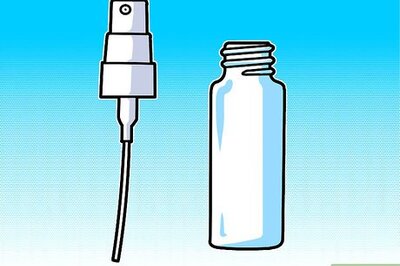
views
London: Scientists have developed a novel technique to make production of biodegradable plastic cheaper and greener.
Biodegradable drinking cups or vegetable wrapping foil: the bioplastic known as polylactic acid (PLA) is already a part of our everyday lives. Yet, PLA is not yet considered a full alternative to traditional petroleum-based plastics, as it is costly to produce.
Researchers from the KU Leuven Centre for Surface Chemistry and Catalysis in Belgium now present a way to make the PLA production process more simple and waste-free.
PLA is derived from renewable resources, including the sugar in maize and sugarcane. Fermentation turns the sugar into lactic acid, which in turn is a building block for polylactic acid. PLA degrades after a number of years in certain environments.
If it is collected and sorted correctly, it is both industrially compostable and recyclable.
In addition, PLA is biocompatible and thus suitable for medical use, for instance in absorbable suture threads. PLA is also one of the few plastics that are suitable for 3D printing, researchers said.
The production process for PLA is expensive because of the intermediary steps.
"First, lactic acid is fed into a reactor and converted into a type of pre-plastic under high temperature and in a vacuum. This is an expensive process," said Professor Bert Sels.
The pre-plastic - a low-quality plastic - is then broken down into building blocks for PLA, researchers said. And even though PLA is considered a green plastic, the various intermediary steps in the production process still require metals and produce waste, researchers said.
"We have applied a petrochemical concept to biomass. We speed up and guide the chemical process in the reactor with a zeolite as a catalyst," said postdoctoral researcher Michiel Dusselier.
Zeolites are porous minerals. By selecting a specific type on the basis of its pore shape, we were able to convert lactic acid directly into the building blocks for PLA without making the larger by-products that do not fit into the zeolite pores.
"Our new method has several advantages compared to the traditional technique: we produce more PLA with less waste and without using metals. In addition, the production process is cheaper, because we can skip a step," researchers said.
The findings were published in the journal Science.




















Comments
0 comment